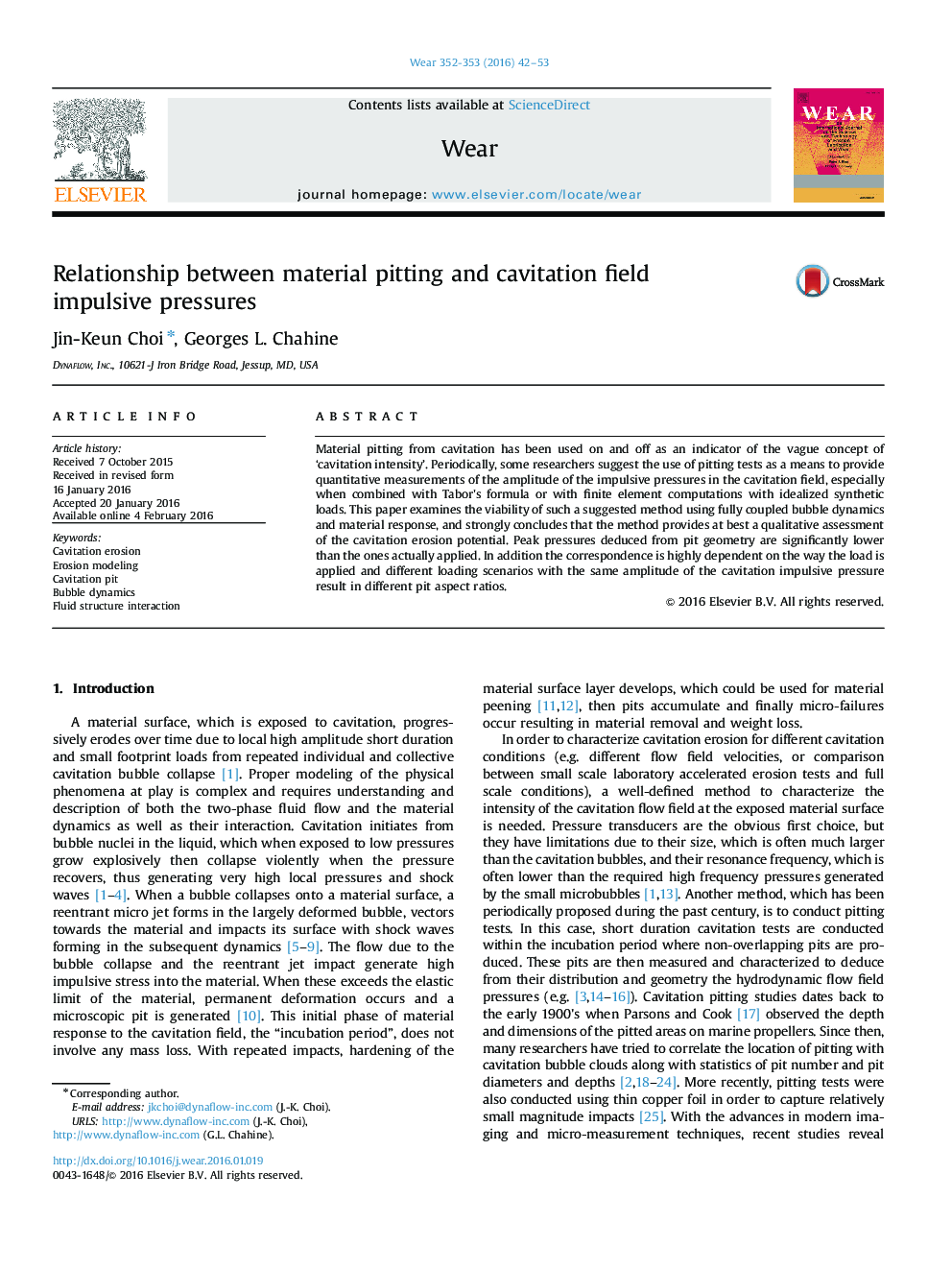| کد مقاله | کد نشریه | سال انتشار | مقاله انگلیسی | نسخه تمام متن |
|---|---|---|---|---|
| 616908 | 1454965 | 2016 | 12 صفحه PDF | دانلود رایگان |
• Cavitation pitting was modeled by coupling bubble and material dynamics.
• Tabor relation was used to deduce stress from the computed pit geometries.
• There is no one-to-one relationship between peak pressure and pit geometry.
• Tabor deduced stress is an order of magnitude smaller than the imposed load.
• Tabor deduced stress is close to the maximum equivalent stress in material.
Material pitting from cavitation has been used on and off as an indicator of the vague concept of ‘cavitation intensity’. Periodically, some researchers suggest the use of pitting tests as a means to provide quantitative measurements of the amplitude of the impulsive pressures in the cavitation field, especially when combined with Tabor׳s formula or with finite element computations with idealized synthetic loads. This paper examines the viability of such a suggested method using fully coupled bubble dynamics and material response, and strongly concludes that the method provides at best a qualitative assessment of the cavitation erosion potential. Peak pressures deduced from pit geometry are significantly lower than the ones actually applied. In addition the correspondence is highly dependent on the way the load is applied and different loading scenarios with the same amplitude of the cavitation impulsive pressure result in different pit aspect ratios.
Journal: Wear - Volumes 352–353, 15 April 2016, Pages 42–53
